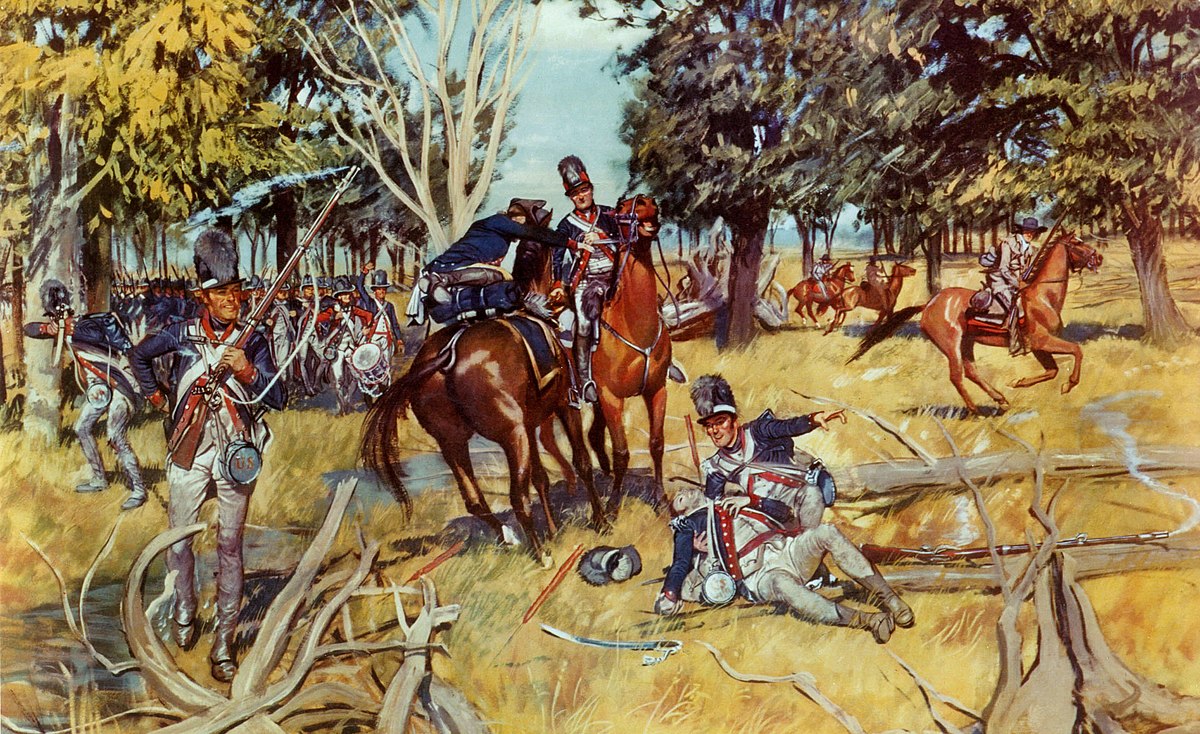
Northwest Indian War
Ohio River, United StatesThe Northwest Indian War (1786–1795), also known by other names, was an armed conflict for control of the Northwest Territory fought between the United States and a united group of Native American nations known today as the Northwestern Confederacy. The United States Army considers it the first of the American Indian Wars.[22]
Following centuries of conflict for control of this region, it was granted to the new United States by the Kingdom of Great Britain in article 2 of the Treaty of Paris, which ended the American Revolutionary War. The treaty used the Great Lakes as a border between British territory and the United States. This granted significant territory to the United States, initially known as the Ohio Country and the Illinois Country, which had previously been prohibited to new settlements. However, numerous Native American peoples inhabited this region, and the British maintained a military presence and continued policies that supported their Native allies. With the encroachment of European-American settlers west of the Appalachian Mountains after the war, a Huron-led confederacy formed in 1785 to resist the usurpation of Indian lands, declaring that lands north and west of the Ohio River were Indian territory.
Four years after the start of the British-supported Native American military campaign, the Constitution of the United States went into effect; George Washington was sworn in as president, which made him the commander-in-chief of U.S. military forces. Accordingly, Washington directed the United States Army to enforce U.S. sovereignty over the territory. The U.S. Army, consisting mostly of untrained recruits and volunteer militiamen, suffered a series of major defeats, including the Harmar campaign (1790) and St. Clair's defeat (1791), which are among the worst defeats ever suffered in the history of the U.S. Army.
St. Clair's devastating loss destroyed most of the United States Army and left the United States vulnerable. Washington was also under congressional investigation and was compelled to quickly raise a bigger army. He chose Revolutionary War veteran General Anthony Wayne to organize and train a proper fighting force. Wayne took command of the new Legion of the United States late in 1792 and spent a year building, training, and acquiring supplies. After a methodical campaign up the Great Miami and Maumee river valleys in western Ohio Country, Wayne led his Legion to a decisive victory at the Battle of Fallen Timbers near the southwestern shore of Lake Erie (near modern Toledo, Ohio) in 1794. Afterward, he went on to establish Fort Wayne at the Miami capital of Kekionga, the symbol of U.S. sovereignty in the heart of Indian Country and within sight of the British. The defeated tribes were forced to cede extensive territory, including much of present-day Ohio, in the Treaty of Greenville in 1795. The Jay Treaty in the same year arranged for cessions of British Great Lakes outposts on the U.S. territory. The British would later retake this land briefly during the War of 1812.
